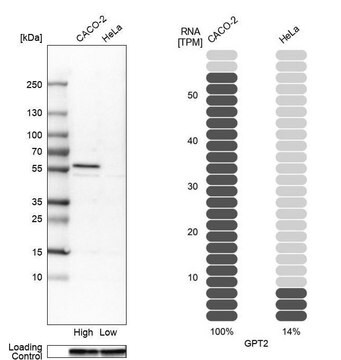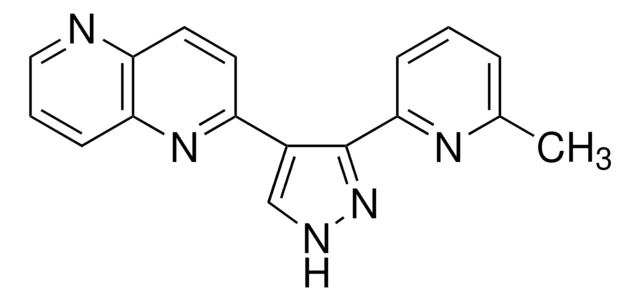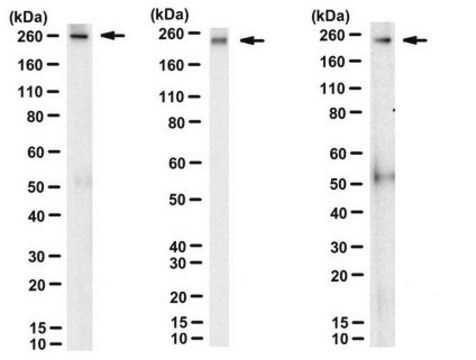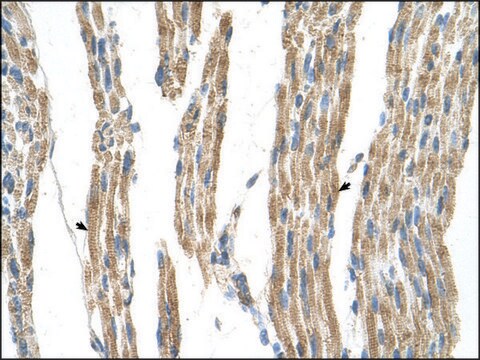ABD121
Anti-PRDM14 Antibody
from rabbit
Sinônimo(s):
PRDM-14, PR domain zinc finger protein 14
About This Item
Produtos recomendados
fonte biológica
rabbit
Nível de qualidade
forma do anticorpo
unpurified
tipo de produto de anticorpo
primary antibodies
clone
polyclonal
reatividade de espécies
human
técnica(s)
ChIP: suitable (ChIP-seq)
western blot: suitable
Isotipo
IgG
nº de adesão UniProt
Condições de expedição
wet ice
modificação pós-traducional do alvo
unmodified
Informações sobre genes
human ... PRDM14(63978)
Descrição geral
Especificidade
Imunogênio
Aplicação
ChIPseq Analysis: A representative lot was used by an independent laboratory on H1 human ES cells (Chia et al., 2010. Nature. 316, VOL 468)
Stem Cell Research
Pluripotent & Early Differentiation
Qualidade
Descrição-alvo
forma física
Armazenamento e estabilidade
Handling Recommendations: Upon receipt and prior to removing the cap, centrifuge the vial and gently mix the solution. Aliquot into microcentrifuge tubes and store at -20°C. Avoid repeated freeze/thaw cycles, which may damage IgG and affect product performance.
Outras notas
Exoneração de responsabilidade
Não está encontrando o produto certo?
Experimente o nosso Ferramenta de seleção de produtos.
Código de classe de armazenamento
10 - Combustible liquids
Classe de risco de água (WGK)
WGK 1
Ponto de fulgor (°F)
Not applicable
Ponto de fulgor (°C)
Not applicable
Certificados de análise (COA)
Busque Certificados de análise (COA) digitando o Número do Lote do produto. Os números de lote e remessa podem ser encontrados no rótulo de um produto após a palavra “Lot” ou “Batch”.
Já possui este produto?
Encontre a documentação dos produtos que você adquiriu recentemente na biblioteca de documentos.
Nossa equipe de cientistas tem experiência em todas as áreas de pesquisa, incluindo Life Sciences, ciência de materiais, síntese química, cromatografia, química analítica e muitas outras.
Entre em contato com a assistência técnica








